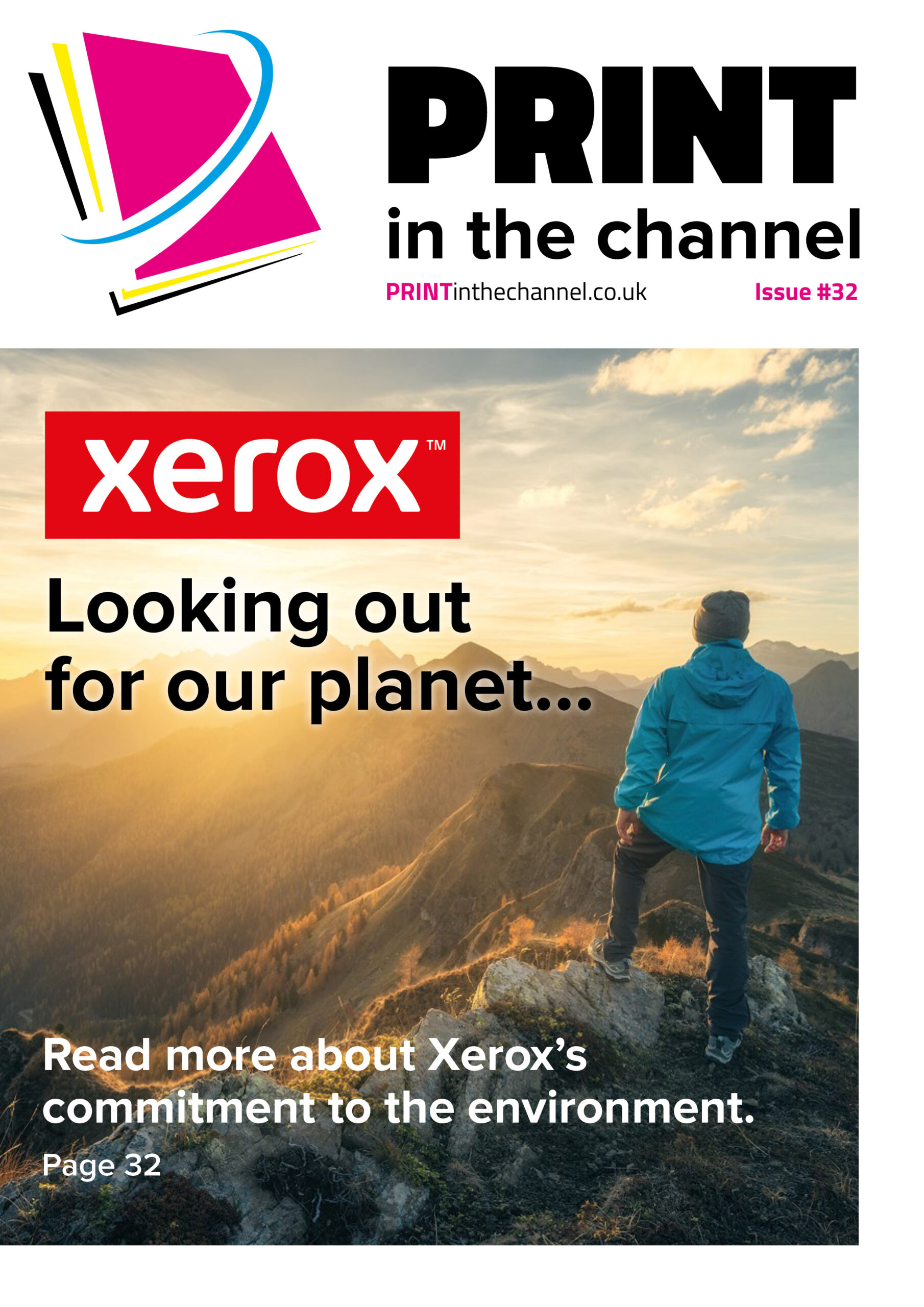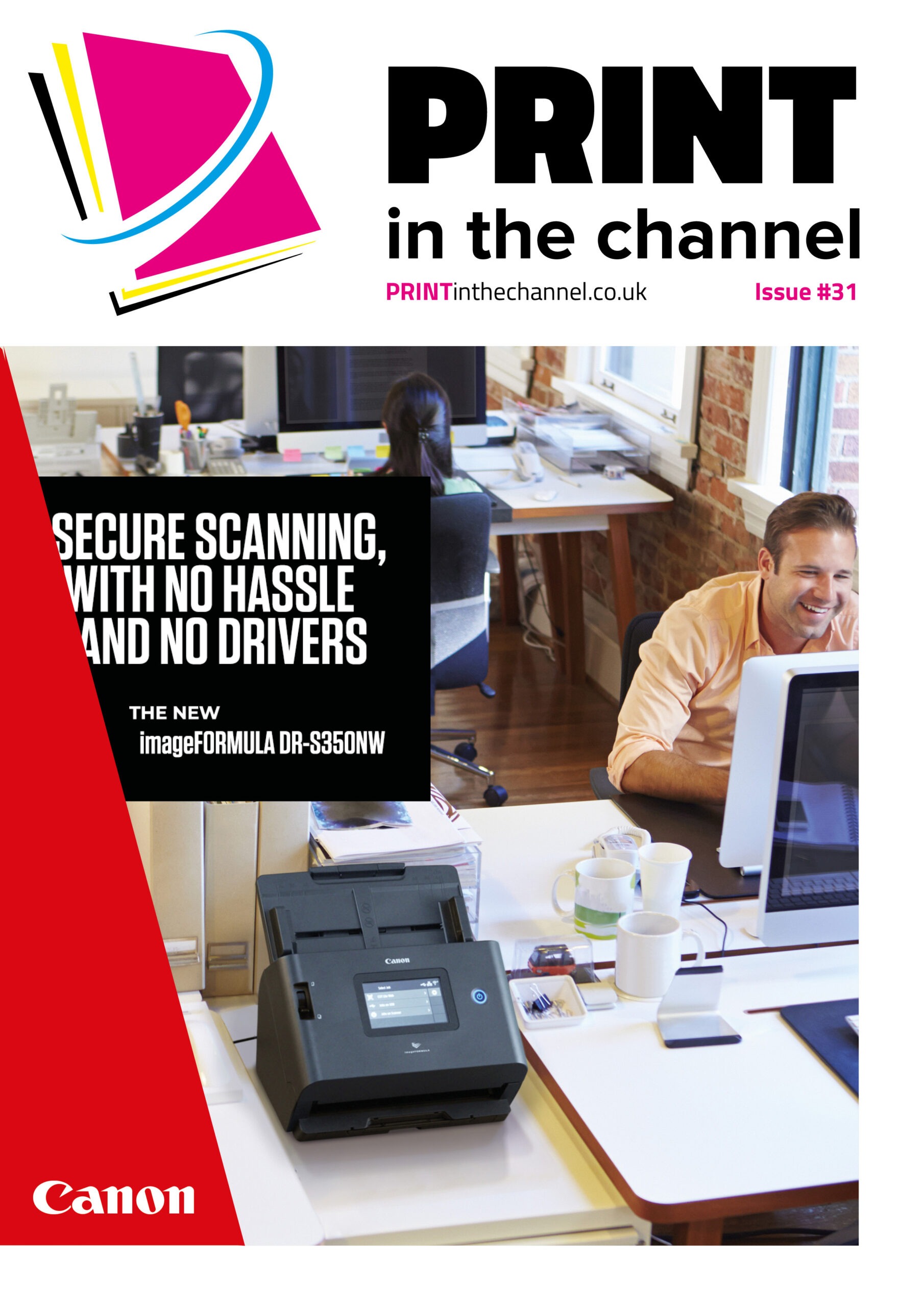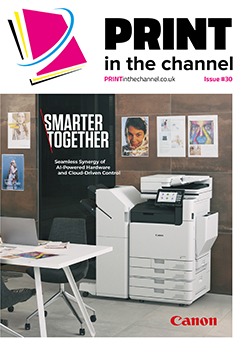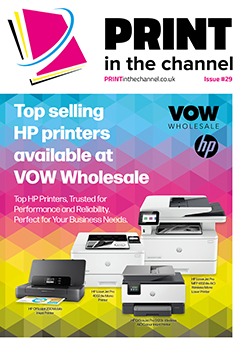Labelling plays a crucial role in the healthcare sector, and badly printed labels can cause major problems. But printer label manufacturers have reacted and are providing a range of solutions to ensure labels are consistent and readable throughout their life.
Labels are an integral part of the healthcare sector, and crucial to ensure that medications are distributed and taken correctly.
As Richard Barfield, EMEA Core Portfolio Marketing for Printers, Printing Supplies, and Environmental Sensors – ATS Division, Zebra Technologies Europe, notes, globally each year, 134 million adverse events occur in hospitals in low- and middle-income countries, due to medication errors that resulted in 2.6 million deaths, according to Science Direct.
“Labelling and packaging play a crucial role in ensuring the authenticity, integrity and safety of pharmaceutical products,” he says.
“The primary function of a label is to provide clear instructions and facilitate easy identification of the drug by healthcare professionals and consumers. Effective labelling promotes the safe use of medication by including essential information such as the drug’s identification, strength, size, colour and batch details. Additionally, it should communicate important details about the drug’s indications, contraindications and potential side effects.
“From a healthcare perspective, barcode and labelling is used in a broad spectrum of applications, from patient identification with wristbands, bedside labelling of specimens, slide labelling in the pharmacy, to asset labelling of high value or critical equipment, often incorporating Radio Frequency Identification (RFID) tags as part of a wider location solution.
“It has been estimated that more than 160,000 adverse patient events occur each year in the U.S. because of patient or specimen identification errors involving the laboratory.”
Poor design and inconsistency
Deyon Antoine, product marketing manager, Toshiba Tec adds that poor label design, such as look-alike labels, pose a risk for confusion, wrong administration and harm.
“Also, physical labels due to their nature are inflexible with limited space, information is crammed on the label by using small fonts, which impairs readability,” he adds. “Content inconsistencies due to region-specific regulations can also cause problems.”
But there are ways to combat this, such as through compliance i.e. label design, design approval. “Also, ensuring clear, accurate, standardised labelling practices is essential to enhance patient safety and prevent errors. standardisation of label quality/integrity including label size, font type, font size, information positioning, 1D and 2D codes,” Deyon says.
“Electronic label (eLabel) in addition to or as a replacement of the paper label. eLabels are an electronic version of the package insert and patient information leaflet, distributed via electronic means such as a machine-readable QR code, barcode or URL on the product carton.”
Age concern
Bob Tilling, VP global sales at Kallik, adds that the chance of labels becoming unreadable increases with the patients’ age. “Label designers and label printers are usually of working age, making them much younger than the main users of the NHS and medicines – the elderly,” he says. “Challenges reading the small print or other important information on the label, packaging or ‘information for use’ leaflet mean that the elderly need clearer labelling than their younger counterparts.
“Labels need to be printed by thermal transfer for longevity and clarity, as direct thermal labels fade over time. Inkjet printed labels are generally less clear, but we are seeing improvements with inkjet technology, so that may change.
“However, a printer is only as good as the print ribbon or ink selected, so what goes into the printer needs to have been durability tested. Finally, the speed and temperature settings of a thermal transfer printer are critical to the quality and resilience of the label produced.”
Manufacturer response
Label printer manufacturers are responding to the concerns of healthcare providers with a range of products designed to provide better, more consistent labelling.
Bart Vansteenkiste, global life sciences sector manager, Domino Printing Sciences, notes that inaccurate or unreadable codes are a concern for manufacturers. “As it’s likely that such products will be rejected at some stage during the supply chain,” he says. “Today, many manufacturers have automated quality control systems in place to ensure that codes are correct and readable at the time of printing, but one area where we are starting to see issues is where companies attempt to reduce cost by opting for lower quality materials, including cardboard boxes, labels and printer ribbons. Opting for lower cost items such as this can make it more challenging to ensure that boxes are correctly sealed, labels are properly adhered, and the printed codes on labels will not degrade or disappear during transit.
“To ensure labels are readable and will not prematurely degrade, a combination of quality control and use of high-quality materials, including printer ribbons and labels, can help ensure durability and longevity. For accurate, high-quality prints that will last, we recommend a closed-loop code and check system alongside wax resin printer ribbons and high-quality vellum labels. That said, the exact ribbon and label requirement will vary from manufacturer to manufacturer, so we always test customer-specific samples to ensure the optimal solution.”
Bart adds that label printer manufacturers are responding to quality, accuracy, and durability concerns with advanced closed-loop vision systems which perform multiple accuracy checks on product codes before and after application.
“With a ‘Print, Check, Apply, Check’ system, the readability and accuracy of a code will be checked in the first instance, and after a label has been applied, a second vision system will confirm that a product has received a label with the correct information,” he says. “Alongside this, work is also being done to improve print and apply labelling systems to reduce challenges related to poor box and label quality.”
Bob notes that manufacturers are also prioritising security. “Retaining control over the printer settings is also important,” he says. “Manufacturers are now password protecting these settings from unskilled or unauthorised adjustment. They are also making these settings as ‘variables’, which can be determined and then set in the label design software for the label in question. This ensures each label is always printed at its optimum and previously tested settings to give the best results.”
Withstanding harsh conditions
Richard adds that labels must be able to withstand harsh conditions. “Zebra offers specialised materials and adhesives designed to endure disinfectants, extreme temperatures, and prolonged storage,” he says. “For example, our synthetic labels are ideal for cryogenic lab samples, and our durable labels maintain medication information even after repeated handling and exposure to moisture or chemicals. This durability is crucial for preserving critical information throughout the lifecycle of medical products and patient care processes.
“Printing devices will also need to be disinfected in a healthcare environment to help prevent the spread of pathogens. Zebra’s range of healthcare dedicated printers are purpose-built with medical-grade plastics, as well as medical-grade power supplies, that are IEC 60601-01 compliant for years of safe and reliable performance.
“Zebra enhances label quality and reliability with solutions like Zebra Designer, allowing healthcare and pharmaceutical providers to create optimal label layouts and barcode configurations, minimising printing errors. Integrated verification systems ensure printed barcodes meet stringent industry standards.
“This reliability supports accurate patient identification, safe medication administration, and effective sample tracking, ultimately promoting better patient outcomes and operational efficiency.”
Comprehensive solution
Richard adds Zebra, along with its channel partners, recently supported Hull University Teaching Hospitals NHS Trust, with an end-to-end solution.
“They implemented a comprehensive RFID-based real-time location system with Zebra Technologies, Tagnos and The Barcode Warehouse to optimise the management and tracking of medical equipment across their extensive campuses,” he says.
“This initiative, part of the NHS’ Scan4Safety program, aimed to improve asset visibility, patient care and operational efficiency. Utilising 500 fixed RFID readers, handheld RFID sleds, mobile computers, industrial printers, and over 100,000 RFID labels, the Trust achieved significant outcomes: real-time asset visibility, 88,000 hours saved annually for staff, reduced procurement costs, data-informed purchasing, enhanced equipment maintenance workflows and improved patient care.
“Future plans include expanding tracking capabilities to patient belongings and rental equipment. This large-scale deployment, the biggest of its kind in Europe, promises substantial ROI and sets a versatile foundation for further advancements.”
Integrating labelling devices
Another case study comes from Brother UK. “The chief of the National Audit Office recently advocated for smaller, better targeted projects to modernise IT systems in areas like healthcare, as part of a broader vision to save the public sector at least £20 billion,” says Diane Barnes, senior business manager and healthcare specialist at Brother UK. “The integration of labelling technology in healthcare is a good example of how targeted IT modernisation can deliver efficiencies and productivity gains.
“Leeds Teaching Hospitals Trust, for example, found that its staff took 75 minutes on average to process a batch of pathology blood samples by handwriting labels. We worked with the Trust to integrate a fleet of our QL labelling devices, which reduced processing time to 15 minutes. This represents a five-fold increase in productivity, while the solution also removes the risk of samples being unreadable or misinterpreted due to handwriting.
“We’re also bringing forward quicker devices for faster, more accurate work. We recently upgraded our TD-4 desktop labelling range with two new devices, which now offer the fastest print speeds in their class at up to 8ips. This helps healthcare professionals to complete jobs faster, allowing them to focus time on enhancing patient outcomes.”
Reseller role
Diane adds that resellers have a pivotal role to play in helping healthcare trusts to unlock time and cost-efficiencies, by providing the devices that will help end the burdensome handwriting of label. “Today’s label printing technology is easy to deploy and designed to work with middleware software solutions that negate the need for massive change to current infrastructures and the financial burden associated with that for customers,” she says.
Deyon adds that by automating the labelling process, users save time by speeding up the labelling process, reduce manual human errors and streamline workflows. “Automated labelling systems integrated with label printers allow for quick and accurate printing of labels directly from electronic health records and laboratory information systems,” he says.
“Toshiba Printers are key in inventory management. They help keep track of stock levels, expiration dates and usage. Efficient inventory management ensures that healthcare providers are well-stocked and can provide timely care to patients.
“Compliance with regulatory standards is a critical aspect of healthcare, label printers help healthcare providers adhere to these standards by producing labels that meet specific standards for clarity, durability and information content.
“Printers aid in maintaining traceability and accurate record-keeping. Barcodes, RFiD and unique identifiers enable healthcare providers track medications, samples and equipment throughout their lifecycle. This traceability is crucial for auditing, quality control and responding to recalls or adverse events.
“Label printers can integrate with electronic systems to ensure consistent information across all records and labels. This integration helps maintain the accuracy and integrity of patient information, reducing the risk of discrepancies and enhancing overall information management.”
Richard adds that resellers should highlight several key points. “Firstly, emphasise the importance of label accuracy and readability,” he says. “Highlight how advanced printing technology ensures high-resolution, clear and legible labels, which are critical for maintaining accuracy and safety.”
Durability and compliance are also crucial factors, Richard adds. “Labels in these sectors must withstand various challenging conditions, such as exposure to chemicals, extreme temperatures and frequent handling. Resellers should point out the availability of specialised label materials and adhesives that are designed to endure these harsh environments, ensuring that labels remain intact and readable over time.
“Additionally, compliance with industry regulations is essential. Demonstrate how the printing solutions can help meet these stringent standards, thereby supporting the customers’ regulatory requirements.
“Another significant aspect is the support and scalability of the solutions. Healthcare and pharmaceutical organisations need reliable technical support and the flexibility to scale their operations as needed. Demonstrating the robust customer support services and the ability to adapt to growing demands can reassure potential buyers of the long-term value and reliability of the label printing solutions.”
Bart adds that a machine’s ability to communicate with other systems and integrate within a line are significant advantages in pharmaceutical labelling. “Aggregation of serialised codes may be a requirement depending on the type of product being packaged,” he says. “If this is the case, a printing system will need to be able to communicate effectively with other systems within the packaging line to facilitate this. In addition, pharmaceutical lines are typically space-constrained and will require compact labelling systems that can be easily integrated without taking up a large amount of space.”
Future
As the need for advanced labelling is expected to grow in the future, so are opportunities in this sector for resellers – and there are plenty of developing trends for them to be aware of.
Bart says that he foresees a future where manufacturers are required to serialise more products at the item-level – from single medical devices to individual doses of medicine. “All of which will require new and innovative solutions for item-level serialisation and variable data printing.”
Diane adds that embracing a standard form of barcode will represent the next evolution of labelling. “GS1 is a not-for-profit organisation championing the standardisation of labels because it recognises that all healthcare providers should be speaking the same language when it comes to data capture,” she says. “This means records can be scanned and read by any practice in the country, should patients move or require urgent care while away.”
Deyon adds that in future, labels will have to contain more information. “In their current guise there isn’t enough space to add more information without it becoming eligible, QR codes will have to be utilised as part of elabelling so more information can be referenced on labels,” he says.
“Labels will also have to be more robust/durable to withstand movement throughout the supply chain and still stay legible as this will also aid with track and traceability. There will also be more use of colour for easier identification.”
Bob agrees that QR code use will increase. “They are also being used to give the user more information such as side effects in their own language, rather than trying to find their own language on a massive leaflet with 30 languages on, all written in tiny font,” he says. “The recent EU MDR change has allowed much more information for the product’s use and side effects to be published online and not in a leaflet.”
Genuine
Another increasing concern is proof that medications are genuine. “This is driven by regular news stories about counterfeit medicines,” Bob says. “Also, medicines and treatments are increasingly being purchased online, which raises a level of suspicion. Serial numbers or unique IDs on each pack, where the user can scan with a phone and check via an online portal, are becoming commonplace.”
Richard agrees, adding that labelling plays a critical and growing role in combating the risk of falsified drugs. “The EU’s Falsified Medicines Directive, implemented in 2019, and the FDA’s Drug Supply Chain Security Act, fully enacted last year, address this issue,” he notes. “Counterfeit drugs, often cheaper and posing significant health risks, are estimated by the World Health Organization to account for over 10% of all drugs in circulation.
“There is also growing interest in real-time, in-line label verification. This technology checks labels for readability, correct content, regulatory compliance, and other conditions during the production process before they are applied to products. The maturity of machine vision systems has facilitated this capability on production lines.”










